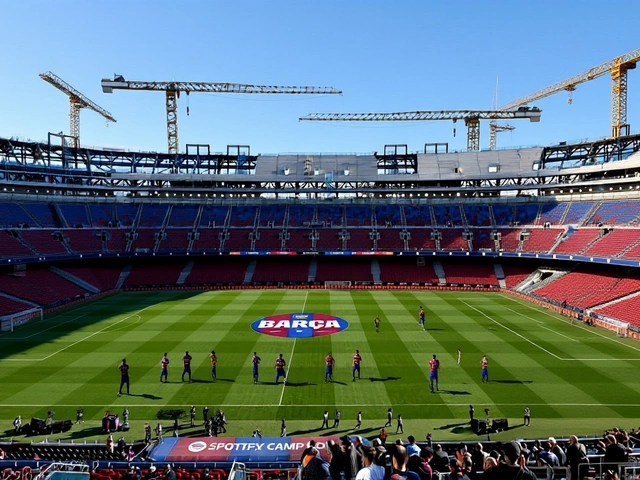A 31-year-old head coach goes up against the most dominant team of the past decade. That’s the pull of Brighton vs Manchester City on Sunday: Fabian Hürzeler’s fresh ideas facing Pep Guardiola’s well-oiled winning habit. It’s a matchup that pulls global attention not just because of the names, but because the styles promise friction—possession against press, control against risk, patience against speed.
What’s at stake and why it matters
For Brighton, this is a measuring stick. The club has made a name for itself by trusting smart recruitment and bold coaching, and Hürzeler arrives with a clear identity from St. Pauli: aggressive pressing, brave build-up, and quick vertical attacks after turnovers. Beating City isn’t the only metric; showing they can impose their plan, even in stretches, says plenty about where this project is headed.
For Manchester City, Sundays like this are about standards. They live in title conversations season after season because they rarely drop levels in tricky away fixtures. City don’t rush games; they drain chaos out of them. They turn ninety minutes into a slow squeeze: pin you back, own the ball, and wait for the moment to land the punch. That’s their comfort zone.
The broadcast buzz around the fixture reflects that clash of approaches. Neutral fans get a clear narrative: can a rising coach push a heavyweight out of rhythm? And if City keep rhythm anyway, how do they do it against an opponent that won’t sit off and won’t stop asking questions?

Tactics, pressure points, and selection calls
Hürzeler’s Brighton wants to build from deep to draw the press, then hit the gaps you leave behind. City will try to shut off the middle and force risky passes into traffic. The first 15 minutes matter: who sets the tempo, who wins the second balls, and who looks comfortable playing the game they want rather than the game they’re forced into.
City’s shape is a familiar puzzle. They’ll push an extra body into midfield, often through an inverted full-back or a centre-back stepping up, to create a spare man around the ball. Their aim: secure control zones near the halfway line, then feed runners between the lines. The pass before the assist is their trademark. Stop that, or you’re chasing shadows.
Brighton’s counter is about timing: when to jump, when to hold. Press too early and City punch through. Press too late and you never get close. Hürzeler’s teams are drilled to hunt in packs and transition fast. Expect Brighton’s wide players to drive at City’s back line once they break pressure, with midfielders arriving late to keep the move alive.
Set pieces could swing this game. City remain strong at attacking the near post and picking second balls at the edge of the box. Brighton, meanwhile, are crafty with blockers and decoy runs. In a tight match where long spells of possession cancel each other out, corners and free-kicks become high-value chances.
Selection decisions shape the risk profile. Brighton’s choice in goal can tilt the plan: a keeper comfortable splitting centre-backs invites City to press high but opens lanes if the execution is clean. In midfield, picking a ball-winner versus a passer changes whether Brighton try to go toe-to-toe in control or lean into transitions.
City’s depth is their safety net. They can throw on pace, control, or finishing depending on what the game asks. If they need control, they add another calm passer. If they need punch, they add a runner who attacks space behind. Few teams adjust mid-game as decisively.
Five pressure points to watch:
- The first pass out: If Brighton beat City’s first line cleanly, the back line faces direct runs. If not, City reset camp in Brighton’s half.
- Rodri’s zone: If City’s anchor gets time to face forward, Brighton will be pulled apart. Close him, and City must find riskier routes.
- Wide duels: Brighton love creating 2v1s on the flanks. City counter with quick help from midfield—arrive late, win the ball, break.
- Game state after the opener: If City score first, they suffocate. If Brighton do, the match opens and the pressing traps bite harder.
- Bench impact after 60 minutes: Fresh legs in these systems aren’t just energy—they change the geometry of passing options.
There’s also the human element. The Amex crowd knows the drill when big sides visit: be loud early, push every press, and turn near-misses into momentum. That matters for a coach like Hürzeler, whose model runs on collective belief. One well-timed tackle or recovery sprint can ripple into ten minutes of pressure.
Expect City to test Brighton’s nerve with long, calm spells in possession. Expect Brighton to test City’s nerve with brave passes through the first line and quick hits once they’re through. If the whistle-to-whistle story lives in midfield, the headline moments may come in the boxes—blocks, near-post runs, and the choice to shoot or square at full speed.
One more thing to keep in mind: discipline. City rarely lose their shape when transitions break down. Brighton can’t afford cheap giveaways in central areas; that’s where City flip the switch and attack the heart of the defense. Conversely, if Brighton keep their structure when City lose the ball, there’s room to run into behind the full-backs.
Strip away the noise and you get a simple question: can Brighton make City uncomfortable for long enough to turn pressure into chances? If the answer’s yes, we’ll get a game that sways. If the answer’s no, City will do what they usually do on Sundays—manage, wait, and pounce.





